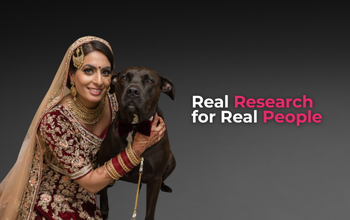The Arthritis Newsletter
Summer 2012On Growing a Third Earlobe
Written by: Gordon Whitehead
It began almost unnoticeably—a small bump behind my left ear. At first, it crossed my awareness threshold only at widely spaced intervals and even then very innocuously. When I washed behind my ears in the morning (as mother had carefully trained me to do as a boy) I would feel it there, or when I brushed my hair near my the back of my left ear, it registered itself as a small but persistent presence. Was it growing; was it getting larger? I somehow felt that it was, but I couldn’t be sure. It was very tricky to get a proper look at it; you had to stand very deliberately in front of the wall mirror and hold another hand mirror to the back of your head to see it, and then it was only a partial view taken from a twisted position. Because it wasn’t exactly easy to see, I often found myself forgetting about it almost entirely for long stretches of time.
But growing it certainly was. And quite steadily too, It kept gaining mass. As it grew, (a sort of plump skin tag or mole) it assumed an almost baroque pearl-drop-earring shape behind my ear. Indeed, it was actually turning into a third earlobe—about the same size and with the same fleshiness of the other two. It wasn’t painful at all, but it was ever more noticeable when my head and ears were viewed from the rear. As well, at bedtime, when I donned my sleep apnea mask for my CPAP machine, the straps now chafed against the growing “thing”. “I am here” it seemed to be saying, “and don’t you forget it”.
The “Lobe” and I.- Yes, I now thought of it as something that ought to be spelled with a capital letter. Indeed, it almost seemed to be assuming the status of an independent entity. What was it up to? What was its game plan? Was there any sort of limit to its growth and its ambitions? Or would it just continue to grow, until one morning, I might find myself in my bed, transformed into a single giant helpless earlobe, rather in the same way that Kafka’s Gregor Samsa woke to find himself suddenly turned into a cockroach. I pictured myself, limbless and helpless on my back, while my wife dialled 911: “I KNOW it sounds extraordinary, but he’s turned into a giant earlobe. Yes, a stretcher is needed because he has no legs!!”
Was the Lobe cancerous? Or could it become cancerous? To my untrained eye, it looked rather benign. It had a sort of pinky-normal colouration that mimicked my real earlobes. But still, it was odd in other ways. For example, as the third Lobe grew, the conduit linking it to my physical system seemed to get thinner and more delicate. I toyed with the idea of cutting the Lobe off myself, perhaps by snipping the connecting conduit with a pair of nail scissors. That would hurt certainly, but if I did it quickly, it might work. But then, I thought that, thin as the connecting conduit was, it had to have developed a sizeable blood vessel in order to adequately nourish the fleshy Lobe below. Severing it would probably cause it to bleed horribly —- so I abandoned that rather ghoulish idea. But other alternative “do-it-yourself” methods for the Lobe’s removal kept occurring to me. When I was a boy, we kept a flock of sheep and we used to remove the lambs’ tails by slipping a tight rubber band over the tail. The rubber band cut off circulation and ultimately caused the tail to drop off below the constricting elastic. Could I slip an elastic band over the Lobe’s neck and kill it off by starving it of blood and nutrition? Possibly. But on reflection, I thought that might be super ugly —and perhaps offensive to other people too —- as the Lobe turned purple and slowly died. It might even make me seem a bit horrific or creepy, like a character from a late night show—a potential guest at the Norman Bate’s Motel. I also irrationally imagined the Lobe screaming as the elastic choked it and perhaps begging for the intercession of strangers.
“Do you notice it?” I asked my wife. “I mean, what does it really look like?”
“I wouldn’t know it was there if you didn’t make such a fuss about it”, she said, “after all, it’s behind your ear and people are looking at the front of your face.”
“But” I reposted, “when we go to the theatre or to a film, the people behind me must look right at it, and it makes me feel like a freak. As well, what if it’s some sort of horrible tumour?”
The last suggestion led my wife to advise firmly that I should go without delay to see the doctor about my unwanted Lobe-(always the sort of advice that men need and which they invariably drag their heels about following). But eventually, when the Lobe threatened to become even larger than its natural twins, I made an appointment to see my GP.
“Well, it looks benign to me” my GP said. “But just to be sure, I’ll send you to the Skin doctor”.
The Skin doctor confirmed that it was benign: “This kind of growth is quite common”, he said, “It’s nothing to worry about”.
“But it’s so ugly”, I replied, “Can’t I have it removed?”
“Yes, of course you can”, he said, “but you’ll have to pay for it yourself. Since it’s benign, removal will be viewed as cosmetic surgery”.
Okay, I thought. Let’s do that!! With the Skin doctor’s assistance, I made an appointment to see a surgeon at the privately owned and operated False Creek Medical Centre—-my first contact ever with that bastion of free market medicine– and something that up to then I had rather disapproved of on principle.
The surgeon there was brisk and business-like. After viewing the Lobe, he said, “We’ll have that off in a jiffy. We will need to have you go into the OR, though, and we’ll do it with a local anaesthetic”.
“How much will it cost me?” I asked.
“Oh”, the surgeon said casually, “I think we can do it all for $500 or so.”
Five hundred dollars, I thought. A quick snip, two stitches and wham, 500 smackers!! I had clearly gone into the wrong line of work!!
Yet—I wanted the horrid Lobe gone. I wanted it 500 dollars gone. In fact, I would have even paid more to chop the wretched thing off my ear. Vanity? Self-indulgence? Those types of self-reproaches flashed through my mind, but I brushed them aside with some relish, enjoying my cruel imaginings over murdering the unwanted Lobe.
When the day of my surgery arrived, I spoke to the Lobe in the bathroom mirror that morning: “You don’t know it, Lobe”, I said, “but your life span is now akin to the grains of sand in an egg timer. You are about to be shuffled off this mortal coil. We are taking a little trip to the guillotine this morning and your days are numbered’. The Lobe received the news in silence, but I liked to think it was somehow quaking with an inner fear.
Three hours later, the Lobe was history and my ear had only two tiny stitches left to testify to its former existence. On the way home, I reflected at greater length about why I had wanted the Lobe gone so badly. Yes, I suppose, in truth, vanity or pride in my personal appearance was involved on several levels. But, hold it—-was it not absurd for a 65 year old man to concern himself with the cosmetic impact of growing a third earlobe?
That thought made me ponder over— and then reflect upon, a bit more seriously–the ingredients that go into building and retaining one’s self image, and maybe, more significantly, it led me to think about how arthritis, with its joint deformities, its distortions of muscle, bone, and movement, affects how we see ourselves and how we believe we are seen by others.
I asked myself how those of us with arthritis go about retaining (or sustaining) a happy healthy self-image when our bodies relentlessly betray us with the inevitable deteriorations associated with a chronic disease? Do we see ourselves and our limbs as being ugly? Does anyone counsel us over our course of treatment in how to deal with loss, not only of function, but of appearance and of a possibly impaired self-image?
As we age, we all have to come to terms with sagging body parts, greying or thinning hair or what have you—-the ravages of time. But if you have arthritis, everything gets speeded up in the decay and deformity departments because these nasty forces often set in and move along well ahead of their ordinary timelines in otherwise healthy persons. In this connection, I thought of a recent interview I’d listened to with the brilliant actress, Meryl Streep. When she was playing Margaret Thatcher in “The Iron Lady”, Ms. Streep defended the film’s portrayal of an increasingly senile heroine by observing that the movie was not about the accretion of power, but about its loss. She said it was “King Lear for girls” and that focus was what made the film’s portrait of Lady Thatcher unique and valuable. Wise words. We all need to come to grips in dealing with loss and this is especially so if you have one of the arthritis diseases.
Maybe I wanted that Lobe gone so much because for me, as a 38 year old veteran of rheumatoid arthritis, it was a supremely EASY cosmetic change to accomplish. By contrast, I can do little about my gnarly hands, my titanium knees, my sore, swollen ankles, and my awkward movements. But I could certainly chop off that Lobe!!! So–in a way, maybe my Lobe served as a sort of physiological voodoo doll—-I could dispatch it with a quick slice when all the other deficiencies in my physical being were not susceptible to anything like as speedy and effective a remedy.
It would be interesting to know how readers cope with the losses that arthritis disease may have brought to them. Were you prepared for that process? Did your disease impair your self-image? Did you discover hidden assets when confronting loss? By contrast, did loss of function somehow help you to develop off-setting talents or skills? Should we do more to assist persons with arthritis to anticipate and to deal with loss, or with any resulting image problems the disease may bring? To what degree might a disease-related depression be attributable to “image loss” or to an “image impairment” attributable to a chronic disease? What are your own metaphorical “Lobes”?
If you have a story that touches or enlarges upon some or all of these issues and questions, would you consider sharing it with our readers? Contributions by e-mail would be most welcome!! They can be sent to:





















































